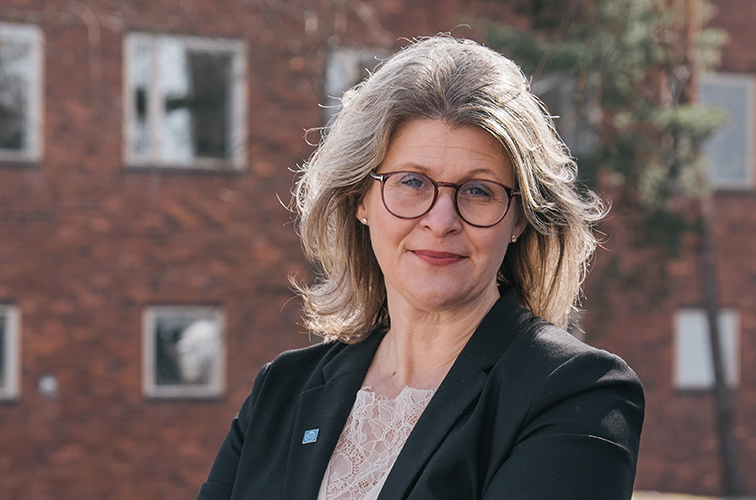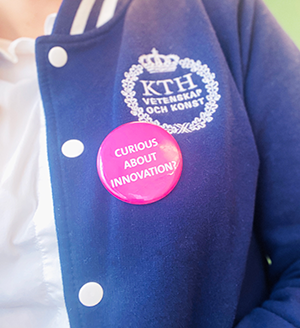Why we don’t want to “attract” more women to KTH Innovation

In 2016, we realized that KTH Innovation had lived like we taught: we had adapted our support to our customers. The only problem? That customer was a man. Since then, we have worked hard to change ourselves and the innovation ecosystem from within. Here is how.
KTH Innovation started in 2007. Since then, we have built a support system with clear steps to go from idea to market. The number of ideas we met increased every year, and we helped found companies that were making real impact. But, something was off. Back in 2016, only 41 women were active in KTH Innovation’s support process.
We asked ourselves: “Why do so few women use KTH Innovation support?” and “What can we do about it?.”
The following text has been adapted from a presentation by Anna Isoz.
Not attracting, but adapting
From the start, we pretty much agreed that we didn’t want to “attract” more women to KTH Innovation. Instead, we decided to work from the assumption that the reason women weren’t using our innovation support in any significant numbers had nothing to do with needing encouragement, but that the support wasn’t fulfilling their needs.
Attracting more women into a system built for men without changing anything about the system itself would only result in those women having to adapt to a system that isn’t for them. That is unfair, and it isn’t compatible with real diversity.
A number of assumptions become clear
So, what was it about our support that wasn’t working? What should we be doing instead?
To find out, we started talking to people and over time a number of assumptions started to become apparent. They were shared by a lot of people and were pretty much the opposite of what the male norm says about an entrepreneur.
Those assumptions were:
- Women don’t believe in their ideas the way men do
- Women also don’t believe in themselves as men do
- Women want to do good, they don’t just want to make money
- Women aren’t dedicated to their ideas the way men are
- Women don’t like to take risk like men do
- Women don’t like to take credit for their work the way men do
- Women don’t get the same support from their peers when they talk about their ideas
- Women don’t ask for and get as much money as men do for their innovation activities
What we heard, basically, was that a lot of the excellent traits that everyone agrees an entrepreneur simply must have, are believed to be lacking in women. We compare them to the norm and they fall short.
A need to think differently
We were very aware of the tendency to view the innovation support process as gender-neutral, when in fact it wasn’t built for women’s needs. If we were to add a special track for women, we would only reinforce this pattern. Instead, we wanted to change our support to be useful to both women and men.
What does it look like in 2023?
If we were to agree that these assumptions about women were correct, we needed to think differently about our processes, change how we communicate and look closely at which practices were reinforcing this pattern.
So since 2016, that is what we have done. Although we are not done yet, the numbers look much better compared to 2016.
Today, the number of teams with female founders that get funding from KTH Innovation has increased by over 200% .
The number of teams with female founders has increased to 40%. Representation in programs, like the Discovery program and pre-incubator program has risen to 59% versus 65% teams with female founders.
What we have done
So what have we done to get here? Here are some examples:
Risk-taking
We decided to stop saying “Take the plunge!” or “Dare to dream!”, statements that signal that there is some kind of risk associated with developing an idea. The truth is that if you study or work at KTH, all you need to do is dedicate some of your own time to start verifying your idea with support from KTH Innovation.
While it is true that you will at some point have to take some kind of risk if you want to go all the way to the market, it takes a long time to get to that point. By that time you will have developed as an entrepreneur and your idea will be properly verified.
Lowering the threshold

We used to say “When you have an idea, come to KTH Innovation!”, a prompt that is clearly not just aimed at one gender. But if women find it difficult to believe in their ideas to begin with, it may be quite a hurdle to just book a meeting with a business coach and jump straight in.
We decided to try saying “If you want to have an idea, come to KTH Innovation!” as well. We started hosting Ideation workshops where we talk about how to get an idea, organizing networking events for everyone curious about innovation, and running programs where researchers could learn more about the innovation process.
Funding
The fact that women don’t get as much funding as men is well documented, but that they ask for less money was more of a news flash to us. We started putting a price tag on the most usual verification activities that we fund so that the need for individuals to decide what to apply for was removed. We also worked hard to increase the number of teams with female founders who got funding. In 2013, only 12% of funded projects had at least one female team member. That number has increased to over 40 % in the last three years.
Into the future
This strong male norm manifests itself in every aspect of innovation support and we are so used to it that we often don’t notice. We have to be constantly aware of our bias, and continue questioning how and why we do things. We will continue scrutinizing our work to create an inclusive and welcoming innovation support system at KTH. Want to help out or have thoughts? Reach out to us at innovation@kth.se !

